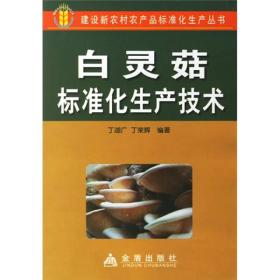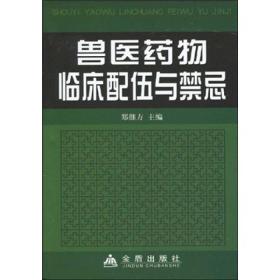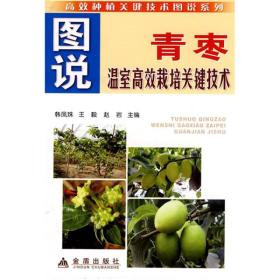
体裁互文性研究
¥ 36.95 9.5折 ¥ 39 九五品
仅1件
河北廊坊
认证卖家担保交易快速发货售后保障
作者陈亚萍
出版社同济大学出版社
出版时间2019-10
版次1
装帧其他
货号A19
上书时间2024-10-31
- 在售商品 暂无
- 平均发货时间 12小时
- 好评率 暂无
- 最新上架
商品详情
- 品相描述:九五品
图书标准信息
- 作者 陈亚萍
- 出版社 同济大学出版社
- 出版时间 2019-10
- 版次 1
- ISBN 9787560884806
- 定价 39.00元
- 装帧 其他
- 开本 16开
- 纸张 胶版纸
- 页数 161页
- 字数 268千字
- 【内容简介】
-
《体裁互文性研究》为体裁互文研究建构了一个突破语篇层面的宏观的三维理论框架模型,在符号学范畴中将一个宏观社会符号观引入了体裁互文性的研究中。
《体裁互文性研究》的内容共有八章。可供语言学专业的教师、学生及其他从事语言学研究的相关人员阅读使用。 - 【目录】
-
前言
chapter one introduction
1.1 origins of the study
1.2 rationale for the study
1.3 aims and objectives of the study
1.4 organization of the dissertation
chapter two literature review
2.1 origins of intertextuality
2.1.1 kristevas intertextuality in text
2.1.2 saussures implication for intertextuality
2.1.3 bakhtins dialogism and heteroglossia as contributions to
2.1.4 barthescryptogram as intertextuality
2.2 developments of intertextuality
2.2.1 intertextuality in applied linguistics
2.2.2 intertextuality in the systemic functional field
2.2.3 intertextuality in text linguistics
2.2.4 intertextuality in critical discourse analysis
2.2.5 summary
2.3 generic intertextuality as a type of intertextuality
2.3.1 generic intertextuality in critical approach
2.3.2 generic intertextuality in generic approach
2.3.3 summary
chapter three theoretical framework construction
3.1 delimitation of generic intertextuality
3.1.1 overview of genre studies
3.1.2 origins of genre studies
3.1.3 properties of genre
3.1.4 criteria for genre decision
3.1.5 a working definition of generic intertextuality
3.2 macro socio-semiotic rationale construction
3.2.1 language as semiotic resource system
3.2.2 discourse or text
3.2.3 discourse as sign in terms of semiotics
3.2.4 genre as macro so semiosis system
3.2.5 role of ideology in semiotic system
3.2.6 summary
3.3 a three-dimensional framework of generic intertextuality
3.3.1 generic intertextuality system
3.3.2 generic intertextuality process
3.3.3 generic intertextuality focus
chapter four generic intertextuality system
4.1 disciplinary knowledge potentials
4.1.1 knowledge and disciplinary knowledge
4.1.2 elements in disciplinary knowledge potentials
4.1.3 summary
4.2 macro-speech act potentials
4.2.1 macro-structure
4.2.2 macro-rules
4.2.3 macro-action and macro-speech act
4.2.4 elements of macro-speech act potentials
4.3 evaluation potentials
4.3.1 evaluation
4.3.2 so-oriented evaluation and generic intertextuality
4.3.3 summary
4.4 modality potentials
4.4.1 mode,modality and multimodality
4.4.2 multimodality and generic intertextuality
4.4.3 significance of multimodality potentials in generic intertextuality
research
4.5 summary
chapter five generic intertextuality process
5.1 mechanism of generic intertextuality process
5.2 cognitive models of generic intertextuality potentials
5.2.1 frame
5.2.2 schemata
5.2.3 plan
5.2.4 script
5.2.5 summary
5.3 mental models of generic intertextuality process
5.3.1 mental models and mental spaces
5.3.2 mental spaces of genres
5.3.3 mental space integration and generic intertextuality
chapter six generic intertextuality focus
6.1 intentions as mental ponents of actions
6.2 intention as focus of generic intertextuality process
6.2.1 properties of intentions
6.2.2 representation of intentions
6.2.3 realization of intentions
6.3 ideology and generic intertextuality process
6.3.1 understans of ideology
6.3.2 function of ideology in generic intertextuality
chapter seven applications in english teaching
7.1 establishment of english teaching guideline
7.2 english teaching in practice
7.3 role of teacher
7.3.1 interactive mode in english class
7.3.2 use of multimodality in english teaching
7.4 learning assessment
chapter eight conclusions
8.1 major fins and contributions of the study
8.2 limitations of the study
8.3 further research
bibliography
点击展开
点击收起
相关推荐
— 没有更多了 —



















以下为对购买帮助不大的评价